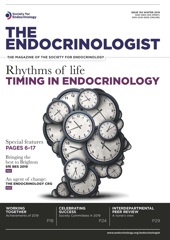We all experience the need to sleep (sleep pressure), but the underlying mechanisms present challenging questions. Sleep pressure is influenced by how long we have been awake, how active we have been, and our intrinsic body clock. Twin papers highlight the importance of these influences by studying what happens at mouse forebrain synapses over the 24-hour cycle and under conditions of sleep deprivation.
Noya et al. have shown that gene expression at synapses shows strong circadian rhythmicity, and that this depends upon a functional molecular clock (rhythmicity is not seen in mice lacking the core clock gene Bmal1). Abundance of synaptic proteins correlates with mRNA transcripts under normal conditions, but this protein rhythmicity is lost under conditions of sleep deprivation, whilst mRNA transcript rhythmicity is not.
Brüning et al. looked at phosphoprotein rhythms at the synapse across the circadian cycle and following sleep deprivation. Protein phosphorylation indicates a change in protein function, and so this study highlights which biological processes at the synapse might be rhythmic. Like the first paper, this article reports large-amplitude circadian rhythms in synaptic phosphoprotein abundance, which are abolished by sleep deprivation.
Together, these studies suggest that transcriptional control at the synapse is probably conferred by the circadian clock, but translation and protein phosphorylation are regulated by patterns in activity and rest. Thus, gene expression arguably keeps track of time of day, whilst protein expression and phosphorylation track sleep pressure.
Read the full articles in Science 366 doi:10.1126/science.aav2642 and doi:10.1126/science.aav3617, as well as a commentary at doi:10.1126/science.aay5304





